Pruning shrubs: get it right with our top pruning tips
Time to tackle the garden pruning? Here's how to get your shrubs in great shape
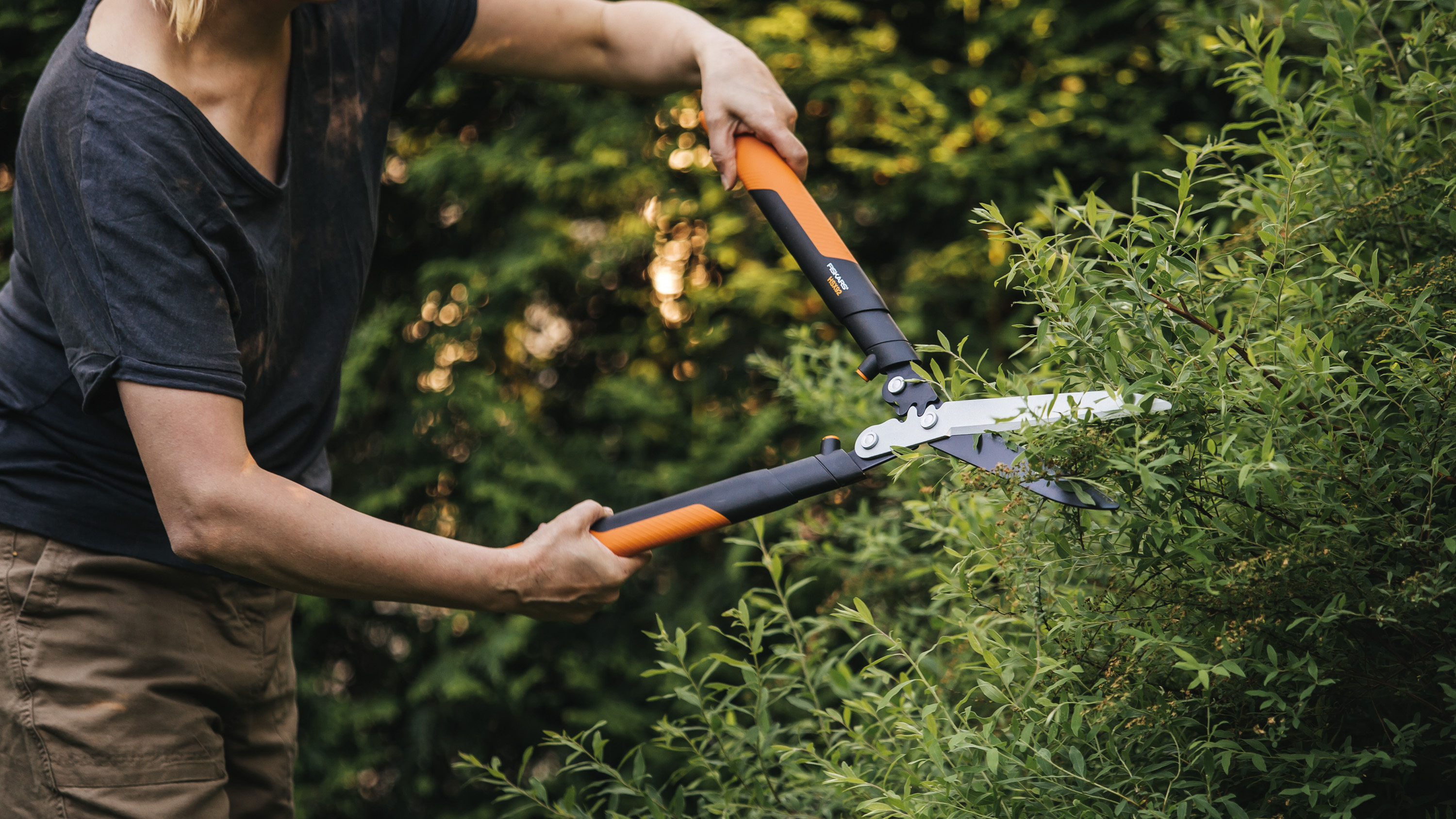

Follow our top tips on pruning shrubs and you'll keep things looking smart right through the year. It will help keep shrubs healthy and in good shape, removing any damaged or diseased stems.
Done regularly, it also stops shrubs taking over, letting more light into the winter garden to benefit smaller plants that may have been stuck in their shade. Another plus is that in some cases it can even make your garden look bigger. Little and often is the trick, so things don’t get out of hand.
Autumn is the best time for pruning many shrubs, as they start to die back and it will make them stronger next year. At this time of year when everything else is dying back, neat lines of clipped shrubs can add crucial delineation and stand-out factor. So get your best secateurs at the ready – here’s what to do!
How to prune

Use the right tools
There are many tools of the trade to achieve a professional-looking finish. In addition to secateurs, there are also electric hedge trimmers, garden shears, loppers and handsaws. Just be sure to use whatever you find most comfortable to work with to complete the job in hand. You'll find the top buys in our guides to the best hedge trimmer, best garden shears and best loppers.
Make sure tools are sharp
Always use tools that are sharp and rust free that will make a clean cut without leaving ragged ends where blight can take hold. Blunt secateurs can leave rough cuts behind that provide a haven for pests. You can also use an antibacterial spray to disinfect your shears or secateurs to avoid diseases spreading.
Cutting tips
Cut just above a bud, at an angle sloping away from it, to let any moisture drain away. If you make a straight cut, this can let moisture in. Make sure you don’t leave a long stem above the bud as this can cause rot and damage. But cut too close to the bud and you could also damage it.
5 key things to remember when pruning
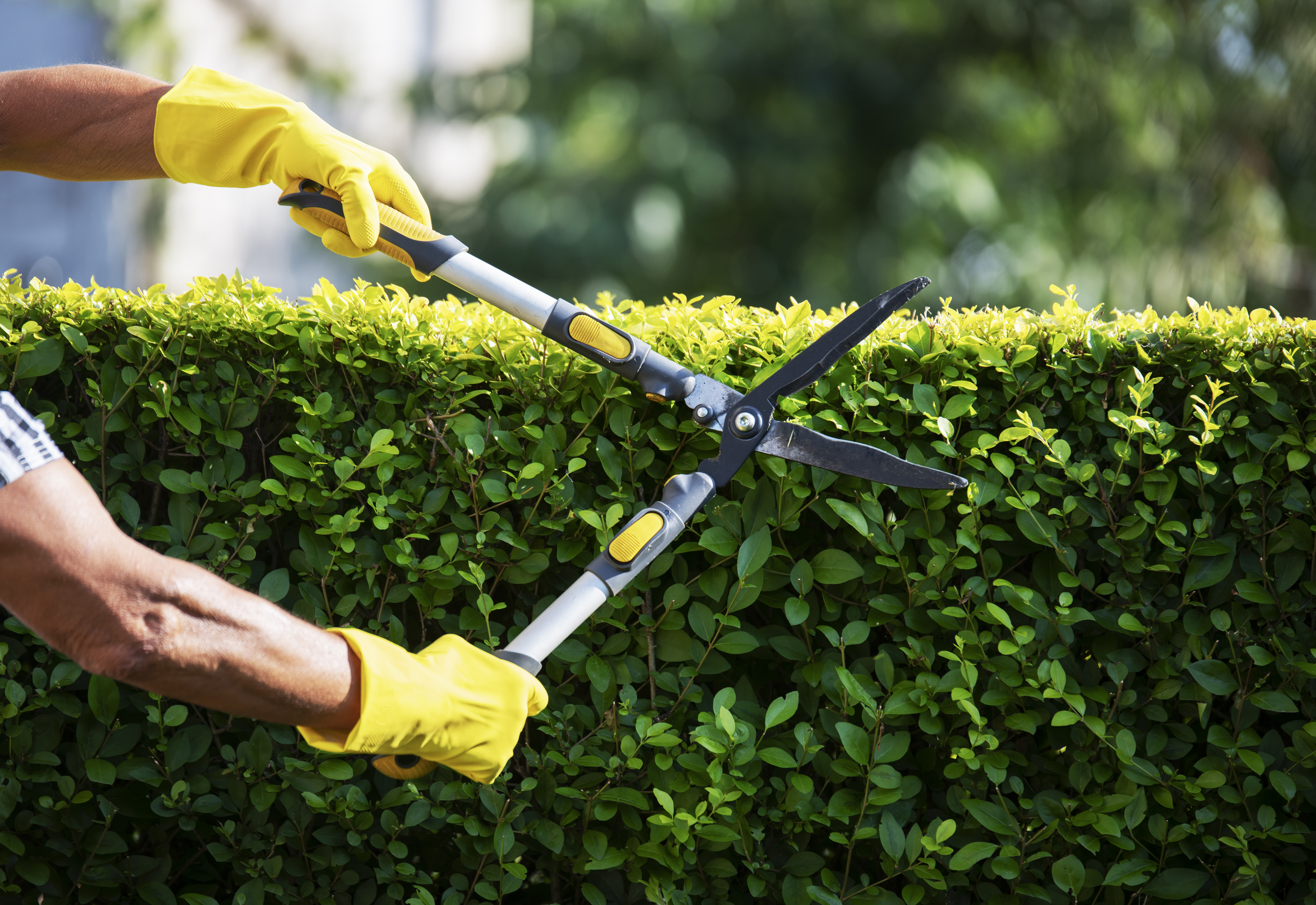
- The ‘right’ time of year to prune varies according to the shrub. Doing it at the wrong time probably won’t kill it (unless you do it again and again) but might weaken it. Sometimes it’s unavoidable, though. If you see a stem damaged by high winds or being attacked by blight, it needs removing immediately. So making a few cuts here and there at any time of year is fine.
- There is a high concentration of plant hormones in the tips of shrubs that play a key role when it comes to pruning. When you trim away these tips, you allow the buds lower down to break open and grow.
- Go easy around new shoots. Generally when you see these, it means that it’s a bad time to prune, as removing them cuts down on the amount of energy a plant can generate to produce more growth. If you prune new shoots in autumn, it may encourage a growth spurt of tender stems that won’t have time to harden off and will be damaged by frost.
- Take your time. Don’t get stuck in too hard without taking a step back every now and then to check things are shaping up evenly. You don’t want to go too far and prune more than is necessary so you have to put up with the shrub looking ugly and shorn all winter.
- It’s important to clean your secateurs after use. Scrub off all the sap and plant bits with a scouring pad dipped in some warm soapy water. Use coarse steel wool to remove any rust or tough stains, then a finer grade of steel wool to restore the shine. Finally, you could get them sharpened professionally at the hardware store. Alternatively, you can do it yourself using a sharpening stone.
Pruning evergreen shrubs
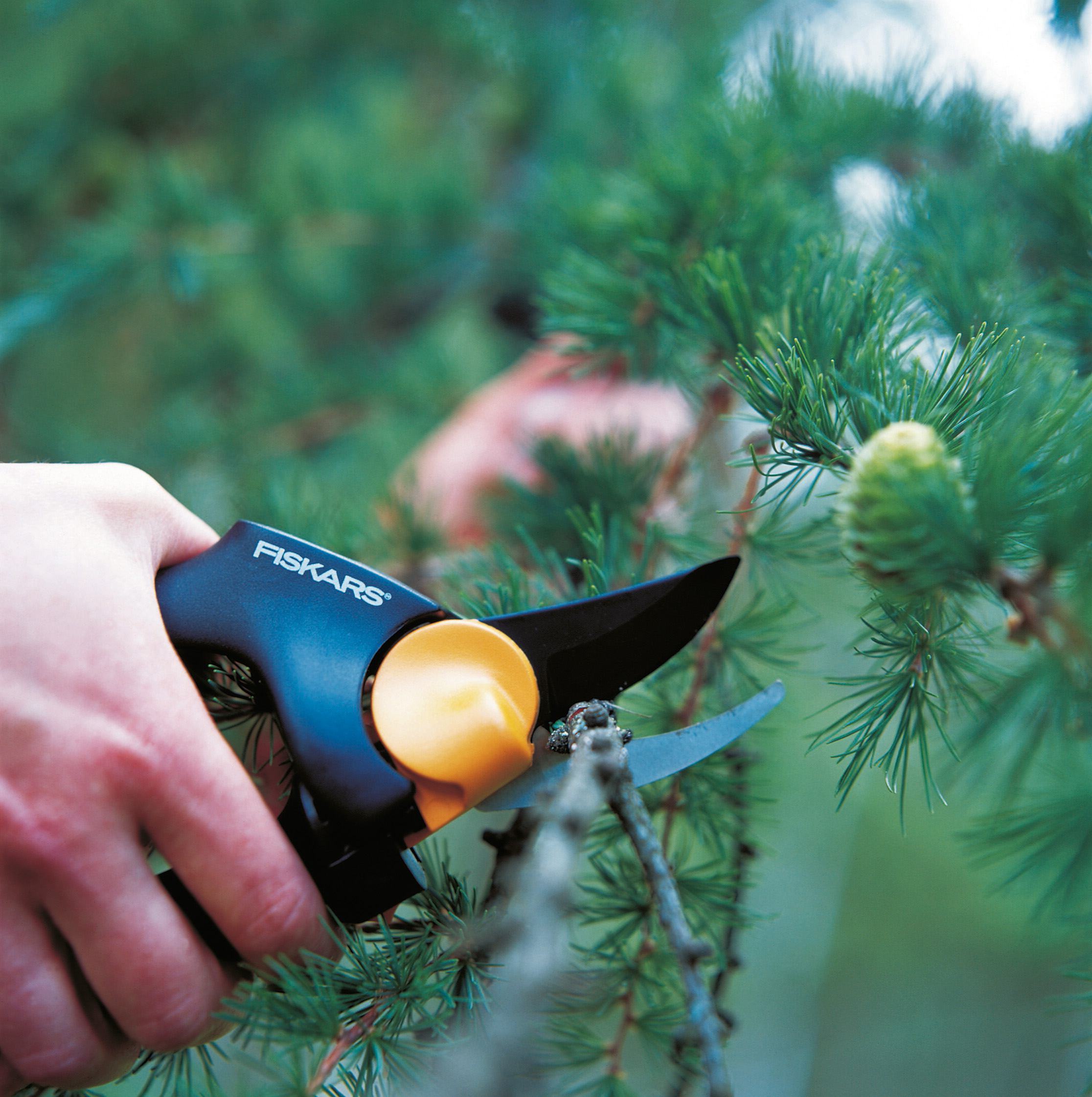
Evergreens used for hedging and topiary need regular trimming to keep things tidy. But generally evergreens need very little pruning once established and this is usually done in spring or after flowering. There's top tips on how to trim a hedge in our guide.
A good rule is to aim to reduce the plant by about a third to prevent it growing too large, pruning out any damaged or dead wood and dense growth to let in light, plus tidying up any random shoots that spoil the shape. After pruning, add a layer of mulch and feed with a general purpose fertiliser.
Deadhead and reshape varieties such as daphne, camellia, azalea and viburnum immediately after they’ve finished flowering.
Head to our guide to mulching for top tips on how to successfully use mulch in your garden.
Pruning deciduous shrubs
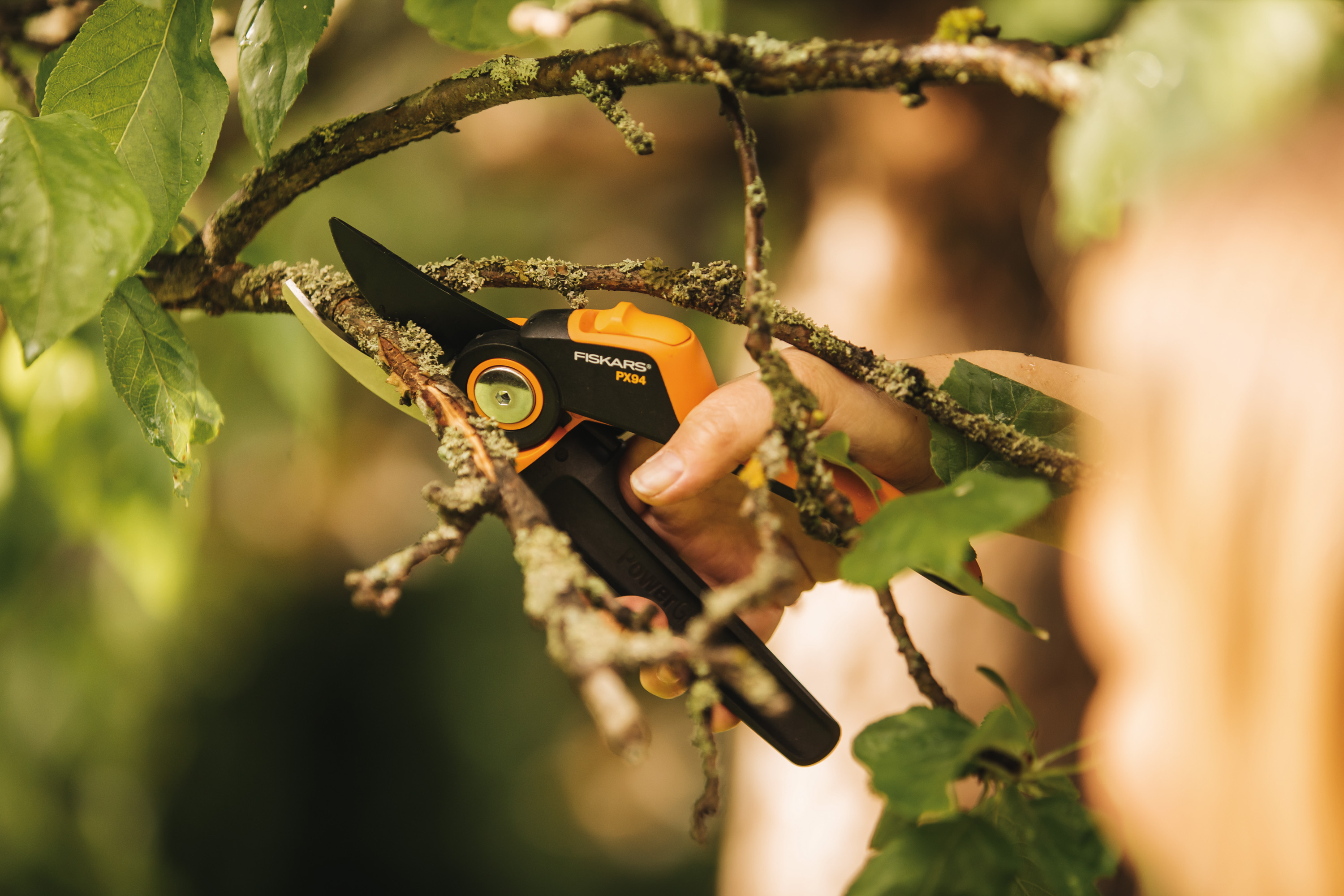
These can be pruned any time in the dormant season, from autumn through to March. Once they lose leaves, their shape is revealed and it’s easy to see what needs to go.
They are more likely to need pruning than evergreens, in order to keep them healthy and in shape. If you don’t keep an eye on this, it can lead to a mass of dead twigs forming in the centre that spoils the look of the shrub.
Cut these out, together with any stems that are lopsided and spoil the shape, then thin out any densely packed stems to let in more light and air.
Pruning shrubs in containers
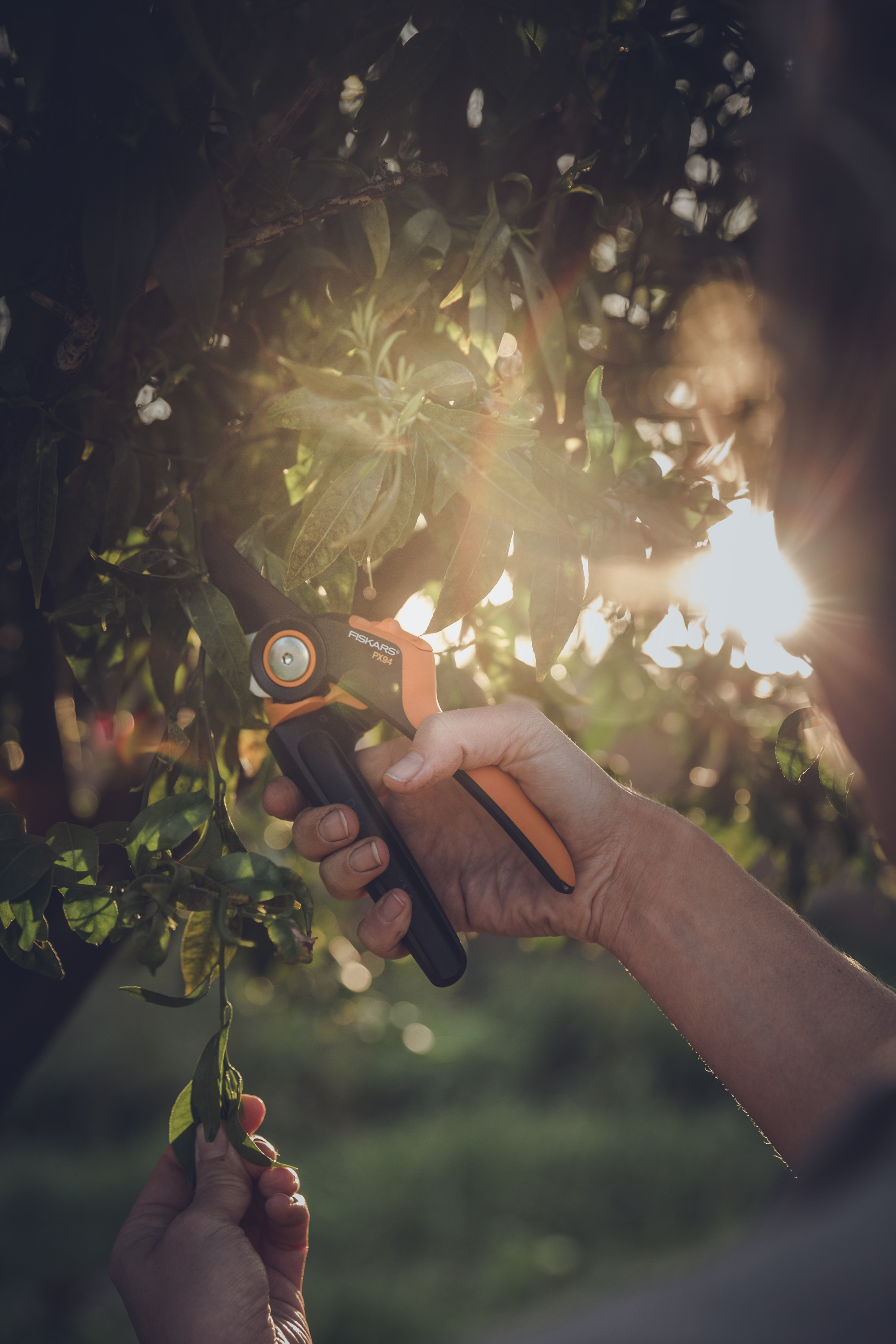
If you have a shrub that’s been in the pot for some time, it can become rootbound, so it’s best to repot every couple of years. This means lightly trimming back some of the thicker roots without damaging the central root ball.
Add fresh compost to the pot, then replace the shrub. Finally, prune back the top growth by about a third to keep everything in balance.
Raising the skirts of trees and shrubs by pruning
Crown lifting is valuable pruning technique anyone can try. It simply involves removing the lower branches of a tree or shrub to raise the height of the canopy. There are a number of reasons for doing this but chiefly, it allows you to underplant the tree or shrub, as you are letting in a lot more light.
It can be tried on a wide range of trees and shrubs, particularly those with a dense, twiggy, spreading habit and is particularly suited to evergreens.
Bamboos can also be thinned out by removing unwanted canes and dense tufts of leaves to expose coloured stems and give a lighter, airier appearance.
Prune trees and shrubs just before they come into growth, in early spring, or before they go dormant in late summer. Avoid cutting during prolonged cold, frosty conditions in winter.
Always start from the bottom and work up. To build confidence, remove dead or dying shoots first, then weak or congested ones, before removing anything larger.
Use secateurs for cuts up to 3/4in thick, loppers for 1½ in and a pruning saw for larger cuts. The idea is to remove branches on the main trunk up to the desired height. Do not leave unsightly stubs, as they could also become infected by disease and die back.
The below plants are suitable for crown lifting:
- Acer palmatum and Acer japonica
- Bamboos, such as Phyllostachys
- Conifers, such as Chamaecyparis, Juniper, Pine and Yew
- Cotoneaster
- Euonymus japonica
- Ligustrum (Privet)
- Pittosporum tenuifolium
- Prunus laurocerasus (Cherry laurel)
- Rhododendron and azalea

Lifestyle journalist Sarah Wilson has been writing about gardens since 2015. She's written for Gardeningetc.com, Livingetc, Homes & Gardens, Easy Gardens and Modern Gardens magazines. Having studied introductory garden and landscape design, she is currently putting the skills learned to good use in her own space where the dream is establishing a cutting garden.
